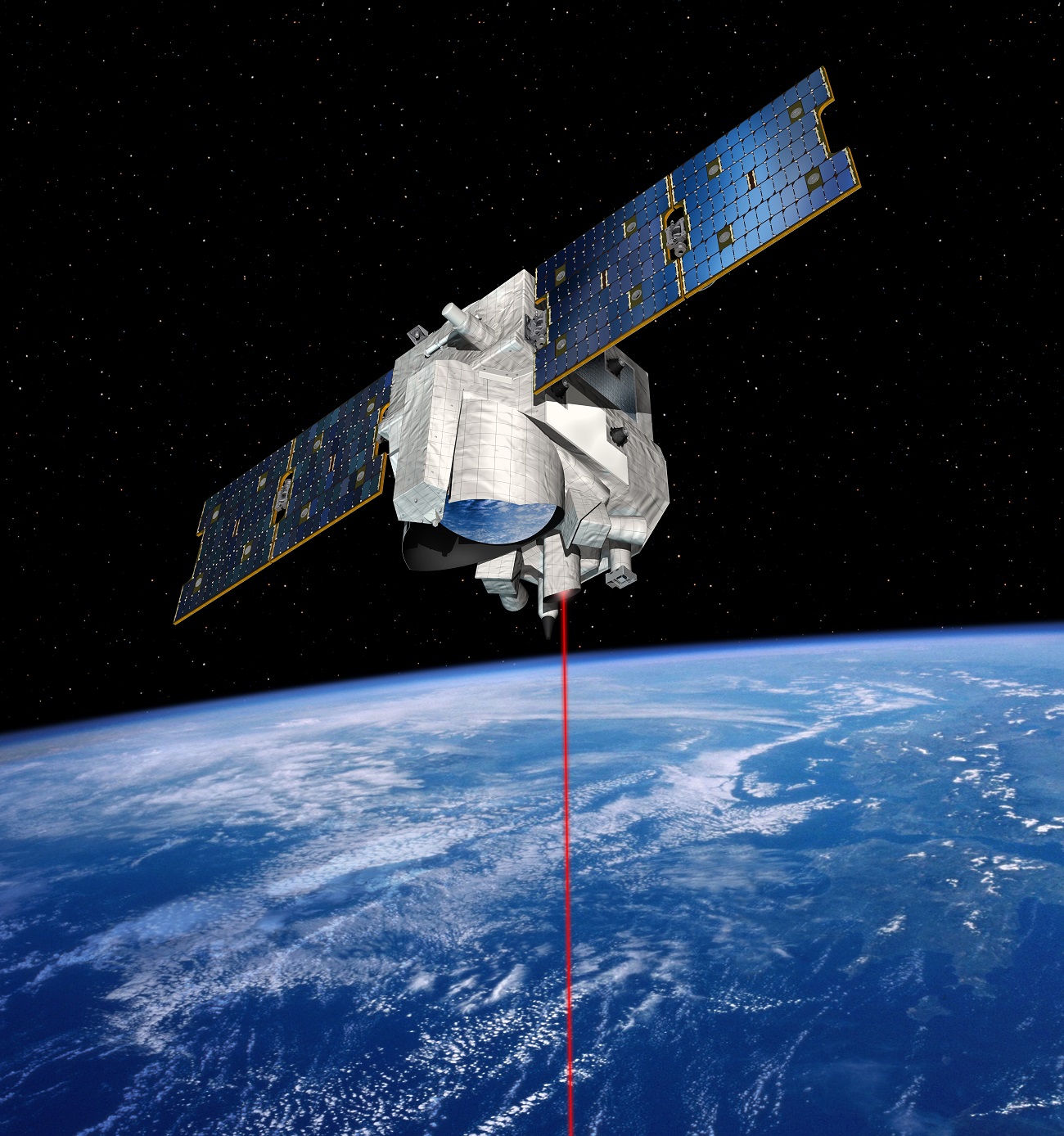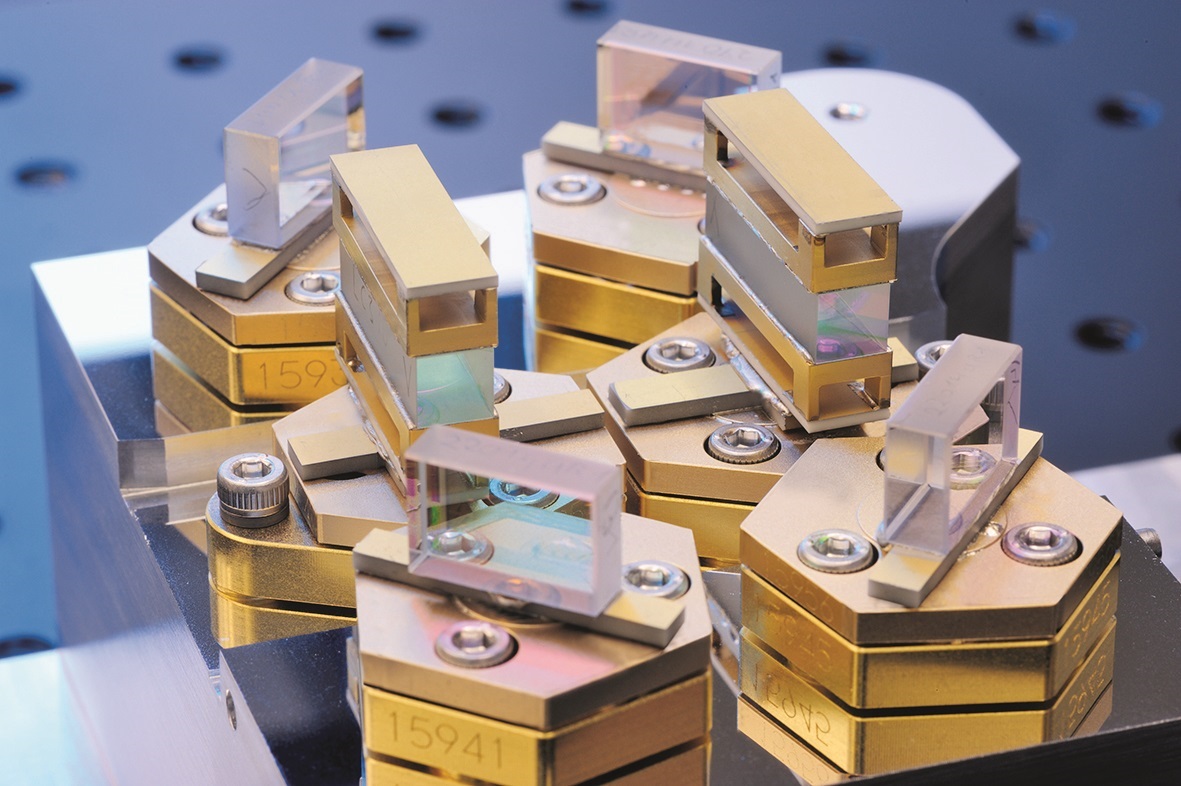28.4.2017
In 2021, the Franco-German satellite MERLIN shall be launched to study methane emissions on Earth. On board is a laser system that works precisely under extreme operating conditions. The technology for this has been developed at the Fraunhofer Institute for Laser Technology ILT in Aachen and will be presented at the LASER World of Photonics 2017.
As a climate gas, methane has not yet garnered as much attention as carbon dioxide, but is – per molecule – 25 times more potent in causing global warming. However, carbon dioxide is present in the atmosphere about 200 times more frequently and is, in absolute terms, more effective. Since 2007, the methane concentration in the atmosphere has risen rapidly, although science has not yet clarified why this has occurred.
Against this backdrop, the Franco-German MERLIN project was conceived and started in 2010. The small satellite MERLIN (Methane Remote Sensing LIDAR Mission) will be launched in 2021 and map the methane in the Earth's atmosphere. The scientists want to understand where methane is introduced into the atmosphere and where it is degraded.
The core of the satellite is a light radar (LIDAR) that sends light pulses into the atmosphere and determines the methane concentration from the backscattered light. So far, solar radiation has been required for methane measurements by means of optical spectrometers, but with MERLIN-LIDAR the values can also be measured on the dark side of the earth. In addition, measurements are also possible in small-scale cloud gaps.
How does one develop lasers for space?
The MERLIN mission places extreme operating requirements upon laser: the system must withstand shocks as well as vibrations up to 25 grms as well as varying thermal loads from -30 °C to +50 °C. In addition, organic materials such as adhesives have to be avoided as completely as possible in order not to contaminate the ambient air and, thus, the high-purity mirror surfaces. Moreover, everything has to work after the launch for the duration of the mission – three years.
For partners such as DLR (the German Aerospace Center), Airbus Defence and Space, TESAT Spacecom and ESA, Fraunhofer ILT has been developing technologies for lasers suitable for space missions for years. While individual systems have already flown, the experts have now created a new technology platform for laser systems, FULAS (Future Laser System, sponsored by the European Space Agency ESA, FKZ C0O-8/09/FF), that can be adapted to different laser beam characteristics and, thus, missions. The FULAS high power sub-assembly was completed in 2016. The system already passed the first thermal vacuum tests under realistic MERLIN conditions.
For the FULAS platform, the experts have developed not only components suitable for space travel, but also their very own construction technology. In the case of the opto-mechanical components, all essential adjustment steps are carried out with manually guided robots using the so-called Pick & Align method. As a result, the process can be automated, thus making it interesting for other industries.

Representation of the MERLIN instrument based on the Myriade satellite platform.
© Photo CNES/illustration David DUCROS, 2016.
MERLIN is on its way to take-off
The LIDAR laser for MERLIN is also based on the FULAS platform. Laser oscillators, amplifiers and frequency converters are attached on and under a special optical bench. The Pick & Align process is used to adjust and solder the optical components.
The parameters in detail are a challenge: for LIDAR operation, the laser system has to provide 9 mJ double pulses at two wavelengths around 1645 nm in single-frequency operation, with one of the pulses always precisely adjusted to a characteristic methane absorption line. A tailor-made design is used in this system, consisting of an oscillator with active length control, the multi-award winning InnoSlab amplifier with a wavelength of 1064 nm and an optical parametric oscillator (OPO) with two KTP crystals.
A MERLIN predecessor, the LIDAR system of the CHARM-F mission already flew in 2015 on the research aircraft HALO. At that time, the DLR Institute for Atmospheric Physics had integrated the frequency conversion for the LIDAR. For MERLIN, mounting and adjustment concepts for an optimized OPO have been developed and successfully implemented based on the FULAS technology platform. The robustness of the complete OPO structure was demonstrated in MERLIN temperature tests.
Now, since the PDR status (Preliminary Design Review) was achieved last year, the CDR (Critical Design Status) status is being developed and the construction of an EQM (Engineering Qualification Model) prepared. This model will later be subjected to extensive tests in order to prove its suitability for use in space. The findings gained from these tests will be integrated in the construction of the final flight model (FM). However, the basic laser parameters have already been demonstrated on a laboratory model based on standard components.
The MERLIN system shall go into space operation in about three years; the production technologies and the test procedures have already been established and can be used for other airworthy systems. Moreover, as is often the case in space travel, there are interesting synergies for other applications: automated adjustment of optical components, for example, is the order of the day for the production of laser sources.

The LIDAR system for the MERLIN mission incorporates all components from the pump laser to the frequency conversion in a particularly compact design suitable for space operation.
© Photo Fraunhofer ILT, Aachen, Germany.
The MERLIN-LIDAR model will be on display at the joint Fraunhofer stand A2.431 at the LASER World of Photonics 2017 in Munich, Germany.
The MERLIN project has been funded by the German Ministry for Economic Affairs and Energy (BMWi, grant number 50 EP 1601) and is coordinated by DLR Space Administration.












